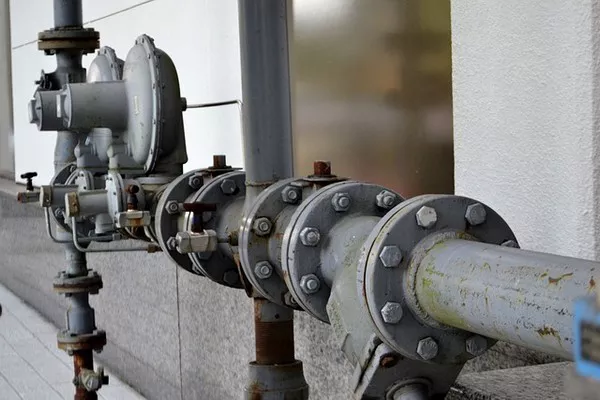Sewage treatment is a vital process that ensures the responsible management of wastewater generated by households, industries, and municipalities. Proper sewage treatment is essential for protecting public health, preserving the environment, and conserving valuable water resources. In this article, we will delve into the intricacies of sewage treatment, exploring the various stages and technologies involved in this critical process.
The Importance of Sewage Treatment
Sewage, often referred to as wastewater, consists of a complex mixture of organic and inorganic materials, including human waste, food scraps, detergents, and industrial effluents. If left untreated, sewage can pose significant health and environmental risks. It can contaminate water sources, spread diseases, and harm aquatic ecosystems. Effective sewage treatment is vital to mitigate these risks and ensure a safe and sustainable future.
The Sewage Treatment Process
Sewage treatment typically involves a series of physical, chemical, and biological processes designed to remove contaminants and pollutants from wastewater. These processes can be broadly categorized into three main stages: primary treatment, secondary treatment, and tertiary treatment.
Primary Treatment
Primary treatment is the initial phase of sewage treatment and focuses on the physical removal of large solids and grit from wastewater. The process begins in a primary settling tank, where wastewater is allowed to settle for a period of time. During this settling process, heavier solids, such as sand, silt, and gravel, sink to the bottom of the tank, forming a sludge layer. Lighter materials, like oil and grease, float to the surface and are skimmed off.
The clarified wastewater, which is relatively free of large solids, is then transferred to the secondary treatment stage. The removed solids, known as primary sludge, are typically treated further to reduce their volume and stabilize their organic content.
Secondary Treatment
Secondary treatment is a biological process aimed at further reducing the concentration of organic matter and nutrients in wastewater. The most common method for secondary treatment is the activated sludge process, which involves the use of microorganisms to break down organic contaminants.
In this process, wastewater is mixed with activated sludge—a mixture of bacteria and other microorganisms—in aeration tanks. These microorganisms metabolize the organic matter in the wastewater, converting it into carbon dioxide, water, and more microorganisms. The aeration tanks are equipped with mechanical aerators that provide oxygen to support the microbial activity.
After the wastewater has been treated in the aeration tanks, it flows into secondary settling tanks. Here, the activated sludge settles out of the water and forms a secondary sludge layer. This sludge can either be returned to the aeration tanks to continue the treatment process or sent for further processing and disposal.
The clarified wastewater, now significantly cleaner than in the primary treatment stage, proceeds to the tertiary treatment phase.
Tertiary Treatment
Tertiary treatment is the final step in sewage treatment and is employed to further improve the quality of the effluent before it is discharged into the environment or used for non-potable purposes, such as irrigation or industrial processes. Tertiary treatment methods vary depending on the desired effluent quality and local regulatory requirements. Some common tertiary treatment processes include:
a. Filtration: Wastewater is passed through various filtration media, such as sand or activated carbon, to remove remaining fine particles and impurities.
b. Chemical Precipitation: Chemicals are added to the wastewater to facilitate the precipitation of phosphorus and other dissolved nutrients, making them easier to remove.
c. Disinfection: To eliminate harmful microorganisms and pathogens, disinfection methods like chlorination or ultraviolet (UV) irradiation are employed.
d. Nutrient Removal: In some cases, excess nutrients like nitrogen and phosphorus are removed from the wastewater to prevent eutrophication in receiving water bodies.
e. Advanced Oxidation Processes: These methods involve the use of powerful oxidizing agents, such as ozone or hydrogen peroxide, to break down recalcitrant organic compounds.
After undergoing tertiary treatment, the treated wastewater meets stringent quality standards and can be safely discharged into rivers, lakes, or oceans, or reused for various non-potable purposes.
Conclusion
Sewage treatment is a complex and crucial process that plays a fundamental role in protecting human health and the environment. Through the stages of primary, secondary, and tertiary treatment, sewage treatment plants effectively remove contaminants, pathogens, and pollutants from wastewater, rendering it safe for discharge or reuse. Advances in technology and increased awareness of environmental preservation have led to the development of more efficient and sustainable sewage treatment methods.
As the global population continues to grow and urbanization expands, the importance of sewage treatment cannot be overstated. Responsible management of wastewater is not only essential for safeguarding our ecosystems but also for ensuring a sustainable and healthy future for all. Governments, industries, and individuals must continue to invest in sewage treatment infrastructure and adopt best practices to minimize the impact of sewage on our planet.


